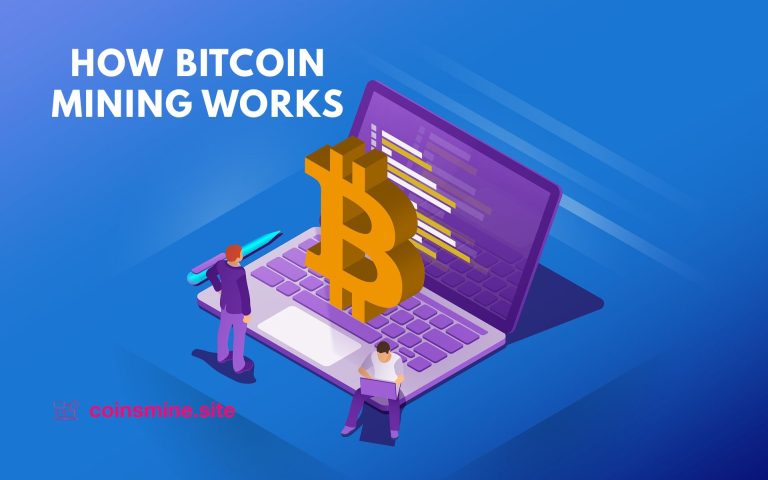How Bitcoin Mining Works
Bitcoin mining refers to the method through which new bitcoins are generated and transactions are incorporated into the blockchain, the public ledger that tracks every Bitcoin transaction. It plays an essential role in the Bitcoin network and involves both technical skills and competition. While the word “mining” may conjure thoughts of searching for gold, Bitcoin mining is exclusively digital and consists of solving intricate mathematical equations with high-performance computers.
The Basics of Bitcoin Mining
Bitcoin operates as a decentralized cryptocurrency, signifying that it does not have a central authority, such as a bank or government, overseeing its operations. One method through which this validation occurs is through mining.
Whenever a person sends Bitcoin, the transaction is shared across the network. These transactions are collected into a block. In exchange, they earn rewards consisting of newly minted bitcoins and transaction fees.
The Role of Proof-of-Work
At the core of Bitcoin mining lies a mechanism known as proof-of-work (PoW). This challenge demands considerable computational resources and energy; however, once it’s resolved, the rest of the network can easily confirm the solution.
If miners are resolving blocks too rapidly, the difficulty rises; if they are too sluggish, it falls.
This system safeguards against manipulation and preserves the network’s integrity. Additionally, it creates a highly competitive mining environment, since only the first miner to complete the puzzle receives
What Do Miners Do?
Miners perform the following key tasks:
-
Collect Transactions: Miners gather unconfirmed transactions from the Bitcoin network and form them into a candidate block.
-
Add a Nonce: They then add a random number called a nonce to the block.
-
Hash the Block Header: The block, along with the nonce, is passed through a cryptographic function (SHA-256) to produce a hash.
-
Earn Rewards: The miner receives the block reward (currently 3.125 BTC as of the 2024 halving) plus the transaction fees in the block.
Mining Rewards and Halving
The original reward for mining Bitcoin was 50 BTC for each block when the network launched in 2009. Nevertheless, this reward is reduced by half roughly every four years during an occurrence known as the Bitcoin halving.
So far, there have been several halvings:
-
2012: 50 BTC → 25 BTC
-
2016: 25 BTC → 12.5 BTC
-
2020: 12.5 BTC → 6.25 BTC
-
2024: 6.25 BTC → 3.125 BTC
The upcoming halving is anticipated to occur in 2028, lowering the reward even more. This steady decline contributes to the increasing scarcity of Bitcoin over time, which could lead to a rise in its value.
The Equipment Used in Mining
In the initial stages of Bitcoin, mining was possible for anyone using a standard computer. Nowadays, the mining difficulty has escalated to the point that it necessitates the use of specialized equipment.
These components are known as ASICs (Application-Specific Integrated Circuits). They are designed specifically to execute the calculations needed for Bitcoin’s proof-of-work algorithm with exceptional speed and efficiency.
ASIC miners are costly, require significant amounts of electricity, and produce a considerable amount of heat. Consequently, mining has primarily transformed into an industrial venture, with mining facilities accommodating thousands of ASICs.
Environmental Concerns
Bitcoin mining has faced criticism for its environmental effects due to the high amount of energy it consumes. Mining activities demand electricity, and the carbon footprint can vary greatly based on the energy source used (such as coal, hydro, or solar).
Many mining corporations are transitioning to renewable energy sources, and some even claim that Bitcoin mining has the potential to stabilize energy grids and utilize surplus energy that would otherwise go to waste.
Conclusion.
Bitcoin mining is a multifaceted yet vital component of the Bitcoin ecosystem. It protects the network, confirms transactions, and adds new coins to the market. Although it demands specific hardware and consumes a significant amount of energy, it is crucial for upholding Bitcoin’s decentralized structure. As advancements in technology and regulations progress, the mining sector is expected to evolve—most likely becoming more efficient, sustainable, and easier to access in the future.



